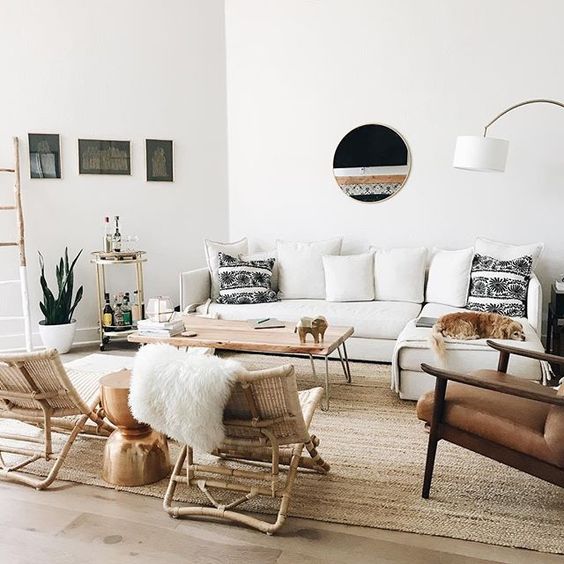Laying out your living room can be a frustrating venture, possibly full of ill-fitting furniture and countless rearranging. It can be hard to get right on your first go round, so we have created a few tips to help you along the way! Just be honest about what you really need in the space and what sized furniture can realistically fit!

Define The Room’s Purpose
The most important place to start when laying out your living room is to figure out exactly what the room’s purpose is. Some uses may seem obvious, like watching tv, but really think about every function you need the living room to achieve. Is this your primary spot for entertaining, where you occasionally work, or where guest’s sleep? Do you have a small open floor plan and the living room serves as the lounge, dining area and entry? Does the living room need to have a place for all of your books, a gallery wall or your kid’s toys?

Outline Your Furniture Needs
After sorting out what functions you need to consider, make a list of the furniture items that will help you achieve that function. For example, if you sometimes work in the living room a desk, laptop table, pop-up coffee table or task lighting might be on your list. If your living room’s primary use is for entertaining, you probably want to look into maximizing your seating options and have one comfy-as-hell sofa. In addition to your main furniture pieces, consider rug, lighting and storage needs as well.

Think About Scale
This tip really depends on the size of your room. If you have a large vaulted ceiling living room you definitely do not want to fill it with a dinky sized sofa and chairs. On the flip-side, if you are living in a studio apartment a hefty sectional won’t be doing you any favors. A good rule of thumb for smaller spaces is looking into an “apartment” sized sofa or loveseat paired with an accent chair or two. Chairs or small benches can easily be moved around and have more flexibility in a tight space. Rug sizing is also important in creating a harmonious living room. Too small and the rug ends up floating unanchored in the room, but too large and it looks like it has taken over the space! My best advice for choosing the proper rug size is to have at least the front legs of your main furniture pieces sitting on the rug. That way everything gets pulled together and you don’t have anything drifting out on its own.
Use Rugs To Define Areas
Keeping in line with the theme of anchoring furniture, use rugs to define different spaces within your living room. It does happen to be called an area rug for a reason! If your living room opens up to your entry, try using a large rug for the main living space and a runner to define the entry area, even if they happen to be only a few feet away from each other. This gives your eye a moment to rest and see the spaces individually.

Source: Pinterest, Jordan-Interiors

